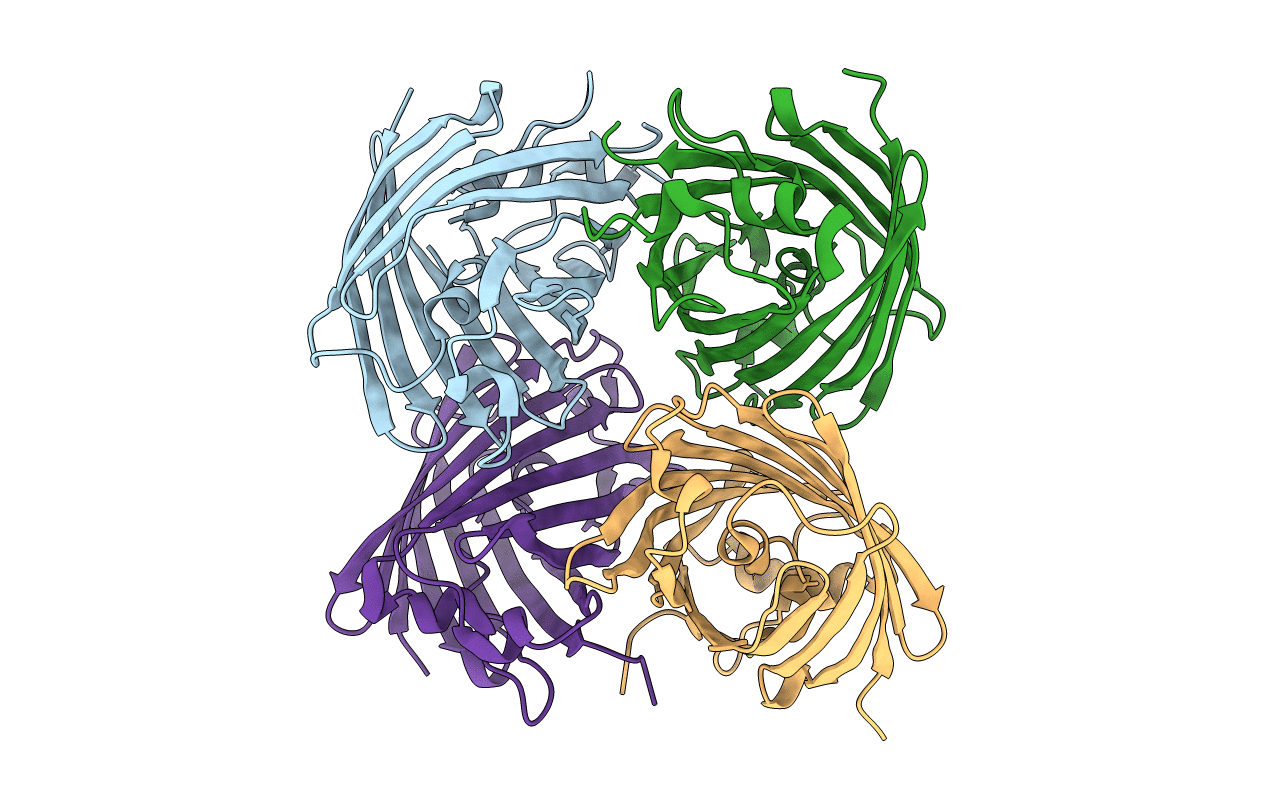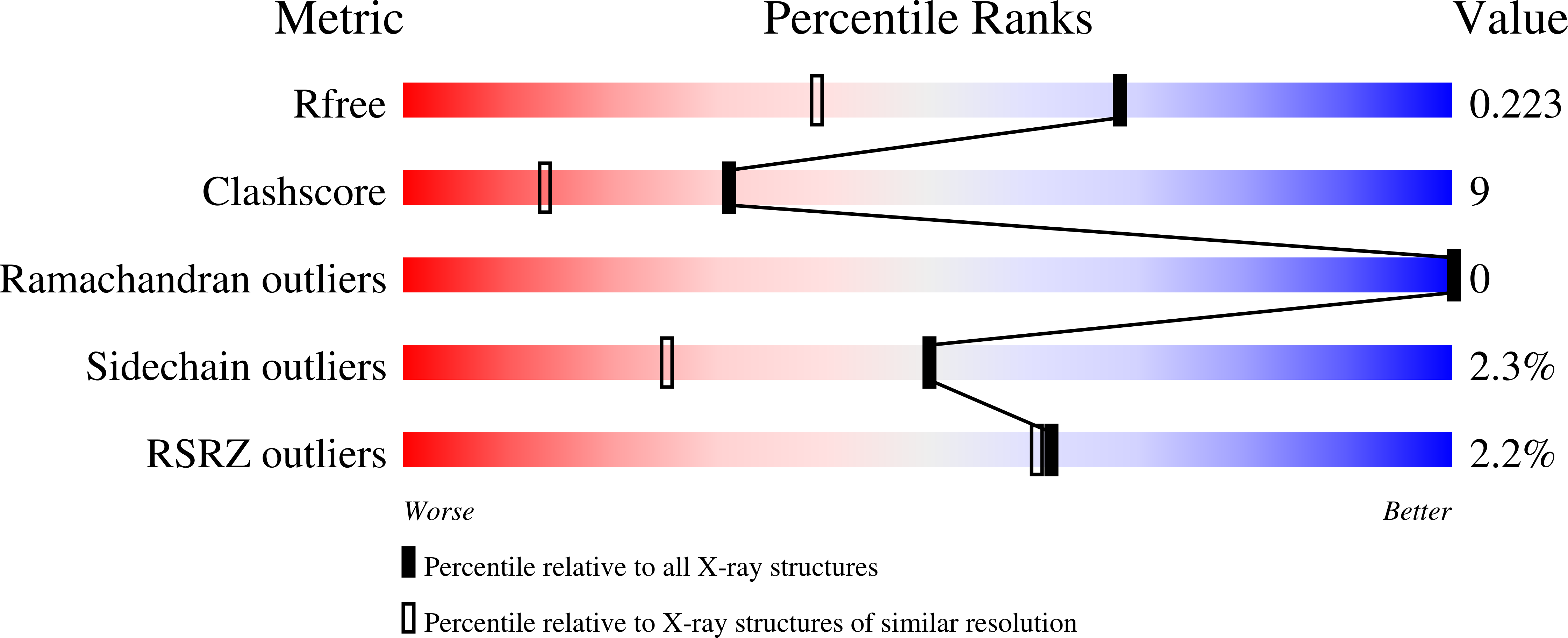
Deposition Date
2006-02-26
Release Date
2006-03-28
Last Version Date
2024-10-30
Entry Detail
PDB ID:
2G6Y
Keywords:
Title:
Crystal structure of the novel green fluorescent protein from marine copepod Pontellina plumata
Biological Source:
Source Organism:
Pontellina plumata (Taxon ID: 239963)
Host Organism:
Method Details:
Experimental Method:
Resolution:
1.60 Å
R-Value Free:
0.21
R-Value Work:
0.16
R-Value Observed:
0.16
Space Group:
P 1 21 1


